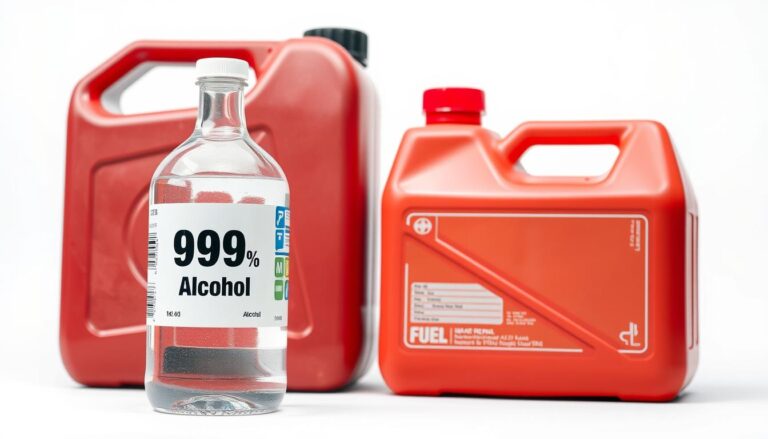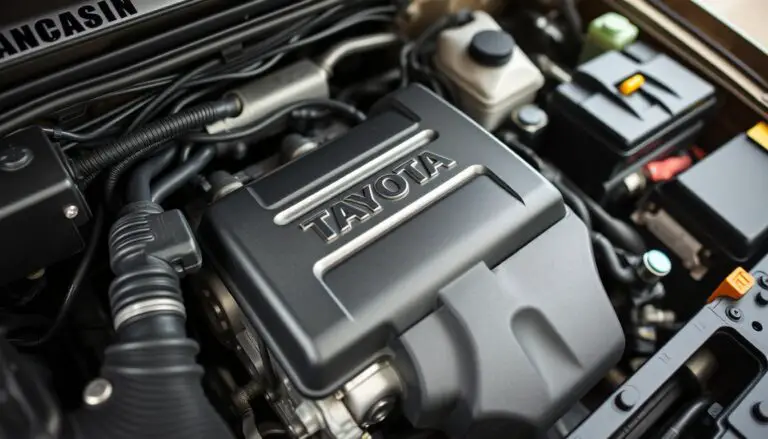Maintaining your Nissan Frontier is crucial for its longevity and performance. One critical aspect of this maintenance is ensuring the transmission fluid capacity is at the recommended level.
Proper transmission maintenance involves not just checking the fluid level but also understanding the type and capacity required for your vehicle. This knowledge is essential for preventing damage and ensuring smooth operation.
Key Takeaways
- Understanding the correct transmission fluid capacity is vital for your Nissan Frontier’s maintenance.
- Regular checks can prevent transmission damage.
- The type of transmission fluid used is crucial for optimal performance.
- Proper maintenance enhances the longevity of your vehicle.
- Refer to your owner’s manual for specific guidelines on transmission fluid capacity.
Understanding Transmission Fluid in Your Nissan Frontier
Understanding the importance of transmission fluid is vital for Nissan Frontier owners who want to ensure their vehicle’s transmission operates efficiently. Transmission fluid serves as a lifeblood for the transmission system, facilitating smooth gear shifts and preventing wear and tear on moving parts.
The Role of Transmission Fluid in Vehicle Performance
Transmission fluid plays a crucial role in maintaining the health of your Nissan Frontier’s transmission. It lubricates the transmission’s components, regulates temperature, and enables the transmission to shift gears smoothly. Without the correct type and amount of transmission fluid, the transmission may suffer from premature wear, leading to costly repairs.
Automatic vs. Manual Transmission Fluid Requirements
The type of transmission fluid required depends on whether your Nissan Frontier has an automatic or manual transmission. Automatic transmissions require a specific type of fluid that is designed to handle the complex hydraulic pressures within the transmission. Manual transmissions, on the other hand, require a different type of fluid that is formulated to lubricate the gears and synchronizers effectively.
Nissan-Recommended Transmission Fluid Specifications
Nissan specifies the type of transmission fluid to be used in their Frontier models. For automatic transmissions, Nissan recommends using a high-quality, synthetic ATF (Automatic Transmission Fluid) that meets their specifications, such as Nissan Matic S ATF. For manual transmissions, the recommended fluid type varies by model year, so it’s essential to consult your owner’s manual or contact a Nissan dealership for the correct specification.
Nissan Frontier Transmission Fluid Capacity by Model Year
Understanding the correct transmission fluid capacity for your Nissan Frontier is crucial for maintaining its performance and longevity. The transmission fluid capacity varies across different model years and drivetrain configurations, making it essential to consult the correct information for your specific vehicle.
2005-2012 Frontier Models Capacity Chart
For Nissan Frontier models produced between 2005 and 2012, the transmission fluid capacity differs based on whether the vehicle is equipped with an automatic or manual transmission, as well as the drivetrain configuration (2WD or 4WD).
For automatic transmissions in 2WD configurations, the capacity is typically around 8.4 quarts, while 4WD models require about 9.5 quarts.
Manual transmissions for these models generally require around 2.7 quarts for 2WD and 3.1 quarts for 4WD.
2013-2021 Frontier Models Capacity Chart
Nissan Frontier models from 2013 to 2021 have slightly different transmission fluid capacities.
For automatic transmissions, 2WD models typically require about 9.5 quarts, while 4WD models need around 10.2 quarts.
For manual transmissions, the capacity remains relatively consistent with the previous generation, at around 2.7 quarts for 2WD and 3.1 quarts for 4WD.
2022 and Newer Frontier Models Capacity
The latest generation of Nissan Frontier, starting from 2022, has updated transmission fluid capacities.
For automatic transmissions, the capacity is around 10.2 quarts for both 2WD and 4WD configurations.
Manual transmission models continue with capacities similar to the previous generation, at approximately 2.7 quarts for 2WD and 3.1 quarts for 4WD.
Differences Between 2WD and 4WD Transmission Capacities
The primary difference in transmission fluid capacity between 2WD and 4WD Nissan Frontier models stems from the additional complexity and components in 4WD systems, such as the transfer case.
Generally, 4WD models require more transmission fluid than their 2WD counterparts to ensure proper lubrication and cooling of the transmission and transfer case.
It’s essential for Nissan Frontier owners to refer to their vehicle’s owner’s manual or consult with a dealership or mechanic to confirm the correct transmission fluid capacity for their specific model, as specifications can vary.
How to Check Your Nissan Frontier’s Transmission Fluid Level
Checking the transmission fluid level in your Nissan Frontier is a crucial maintenance task that ensures the longevity of your vehicle’s transmission. Regular checks can help identify potential issues before they become major problems.
Tools and Materials Needed
Before you start, make sure you have the following tools and materials:
- The owner’s manual
- A clean lint-free cloth or paper towel
- A transmission fluid dipstick (if your Nissan Frontier is equipped with one)
Step-by-Step Checking Process for Automatic Transmissions
For Nissan Frontier models with automatic transmissions, follow these steps:
- Warm up your engine by driving your vehicle for a few minutes.
- Park your Nissan Frontier on a level surface and engage the parking brake.
- With the engine running, shift through all gears, then return to Park.
- Locate the transmission dipstick, pull it out, and wipe it clean with a lint-free cloth.
- Insert the dipstick back into the transmission, then pull it out again to check the fluid level.

Checking Manual Transmission Fluid Levels
For models with manual transmissions, the process is slightly different:
- Locate the transmission fill plug, usually on the side of the transmission.
- Remove the plug and check the fluid level, which should be at the bottom of the fill hole.
- If the level is low, consult your owner’s manual for the correct type of transmission fluid to add.
Signs of Low or Degraded Transmission Fluid
Be aware of the following signs that may indicate low or degraded transmission fluid:
| Sign | Description |
|---|---|
| Slipping or hesitation | The transmission slips or hesitates between gears. |
| Unusual noises | Grinding or whining noises coming from the transmission. |
| Leaking fluid | Visible signs of transmission fluid leaking under the vehicle. |
| Burning smell | A burning smell, indicating overheated transmission fluid. |
Regularly checking your Nissan Frontier’s transmission fluid level and being aware of the signs of low or degraded fluid can help prevent costly repairs and ensure the longevity of your vehicle’s transmission.
Complete Guide to Changing Nissan Frontier Transmission Fluid
Changing the transmission fluid in your Nissan Frontier is a crucial maintenance task that ensures the longevity of your vehicle’s transmission system. Regular maintenance is key to preventing wear and tear, and understanding the process can save you money and hassle in the long run.
Recommended Maintenance Intervals
The manufacturer recommends checking and changing the transmission fluid at specific intervals to maintain optimal performance. For Nissan Frontier models, the recommended interval is typically between 30,000 to 60,000 miles, depending on the model year and driving conditions. It’s essential to consult your owner’s manual or speak with a dealership to determine the best schedule for your vehicle.
Driving in extreme conditions, such as towing a trailer, driving in stop-and-go traffic, or operating in very hot or cold climates, may require more frequent changes. Neglecting to change the transmission fluid as needed can lead to premature wear and potentially costly repairs.

DIY Transmission Fluid Change Procedure
Changing the transmission fluid yourself can be a cost-effective option, but it requires some mechanical knowledge and the right tools. First, ensure you have the correct type and amount of transmission fluid for your Nissan Frontier. The process involves locating the transmission pan, draining the old fluid, and replacing the filter or cleaning the pan as necessary.
Here’s a simplified step-by-step guide:
- Warm up your engine and transmission by driving your vehicle for a few minutes.
- Locate the transmission pan and position a drain pan underneath.
- Remove the pan bolts and let the fluid drain completely.
- Replace the filter or clean the pan, then reattach it.
- Refill the transmission with the recommended type and amount of fluid.
Common Transmission Problems Related to Fluid Issues
Low or degraded transmission fluid can lead to a range of problems, including slipping, hesitation, and unusual noises. If the fluid level is too low, the transmission may not engage gears properly, leading to a loss of power and potentially causing the vehicle to stall. Regular fluid checks and changes are crucial to preventing these issues.
Professional Service vs. DIY: Cost Comparison and Considerations
While doing a transmission fluid change yourself can save money on labor, it’s essential to consider the costs of the fluid and any necessary tools or equipment. Professional service centers have the advantage of experience and specialized equipment, ensuring the job is done correctly. However, this convenience comes at a cost.
When deciding between DIY and professional service, consider your mechanical aptitude, the complexity of the task, and the potential risks. If you’re not comfortable with the process, it’s often better to seek professional help to avoid costly mistakes.
Conclusion
Proper transmission fluid maintenance is crucial for the longevity and performance of your Nissan Frontier’s transmission system. Throughout this article, we’ve covered the essential details regarding Nissan Frontier transmission fluid capacity, the differences between automatic and manual transmission fluid requirements, and the recommended maintenance intervals.
Understanding the specific transmission fluid capacity for your Nissan Frontier model year, whether it’s 2005-2012, 2013-2021, or 2022 and newer, is vital for maintaining optimal transmission performance. Regular checks and changes of the transmission fluid, as outlined in our guide, will help prevent common transmission problems related to fluid issues.
By following the recommended transmission maintenance summary, you can ensure your Nissan Frontier continues to run smoothly, maintaining its performance and extending its lifespan. Regular maintenance is key to avoiding costly repairs and ensuring the reliability of your vehicle.
FAQ
What is the transmission fluid capacity for my Nissan Frontier?
The transmission fluid capacity varies by model year. For 2005-2012 models, it’s approximately 9.5 quarts for automatic transmissions, while 2013-2021 models require around 10.25 quarts. For 2022 and newer models, the capacity is about 10.5 quarts. Always check your owner’s manual or consult with a professional for the most accurate information.
How often should I change my Nissan Frontier’s transmission fluid?
Nissan recommends changing the transmission fluid every 30,000 to 60,000 miles, depending on your driving conditions. If you drive in extreme temperatures, tow a trailer, or drive in stop-and-go traffic, you may need to change it more frequently.
Can I use any transmission fluid in my Nissan Frontier?
No, you should use the type of transmission fluid recommended by Nissan. For most models, Nissan recommends using their genuine ATF (Automatic Transmission Fluid) or an equivalent that meets their specifications.
What are the signs of low or degraded transmission fluid?
Signs include slipping or hesitation between gears, unusual noises, a burning smell, or a leak. If you notice any of these symptoms, check your transmission fluid level and condition, and consider having it serviced.
Can I check my Nissan Frontier’s transmission fluid level myself?
Yes, you can check the transmission fluid level yourself by following the steps outlined in your owner’s manual. For automatic transmissions, this typically involves locating the transmission dipstick, checking the level, and verifying the fluid’s condition.
Is it better to DIY or have a professional change my transmission fluid?
Both options have their advantages. DIY can save you money, but a professional service ensures the job is done correctly and can help identify any potential issues. Consider your comfort level and the complexity of the task when deciding.
Are there differences in transmission fluid capacity between 2WD and 4WD Nissan Frontier models?
Yes, there can be differences. Generally, 4WD models may require slightly more transmission fluid than their 2WD counterparts. Always consult your owner’s manual or a repair manual specific to your model for the correct capacity.
What are the consequences of not maintaining the correct transmission fluid level?
Failing to maintain the correct transmission fluid level can lead to premature wear on your transmission, reduced performance, and potentially costly repairs or even transmission failure.


